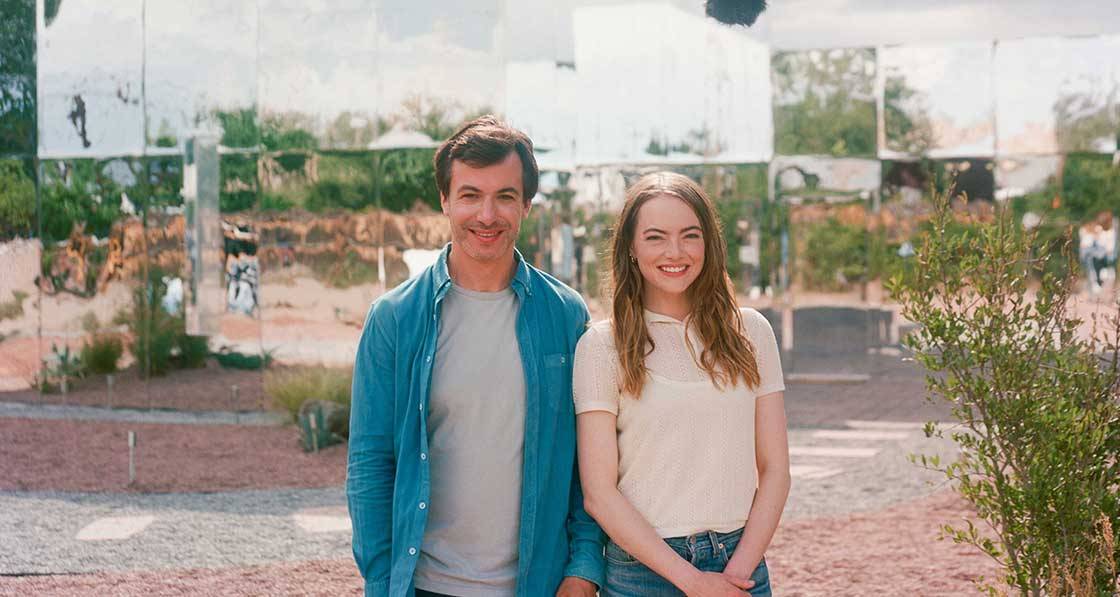
- Big picture
- Posted
Emma Stone show puts passive house up in lights
Sometimes reality is stranger than fiction. And sometimes strange but breathtaking fiction subverts reality.
In issue 47 we took a break from our normal approach to Big Picture, with good reason: passive house playing a starring role in an extraordinary US TV show.
This article was originally published in issue 47 of Passive House Plus magazine. Want immediate access to all back issues and exclusive extra content? Click here to subscribe for as little as €15, or click here to receive the next issue free of charge
It can be hard to switch off after a day wrestling with one of the myriad intricacies of sustainable building, so when you turn on the TV to see a two time Oscar-winning star nodding passionately on the thermal bridging properties of passive house, you could be forgiven for thinking you need a lie down.
But put the smelling salts away for now. In November, the passive house standard really did get front and centre coverage in a major television show starring none other than Emma Stone. The Curse, a pitch-black comedy thriller series created by the critically acclaimed duo of Benny Safdie (Uncut Gems) and Nathan Fielder (Nathan for You), has been singled out for praise as “an incredible show” by no less than Oppenheimer director Christopher Nolan.
In the show Stone and Fielder play Whitney and Asher Seigel, a newly married couple co-starring in a home renovation TV show, Fliplanthropy. Whitney, attempting to atone for the slum landlord parents who bankroll her, sets up a development company with Asher to renovate homes to the passive house standard in Espanola – a real town in New Mexico that has one of the highest crime rates in America.
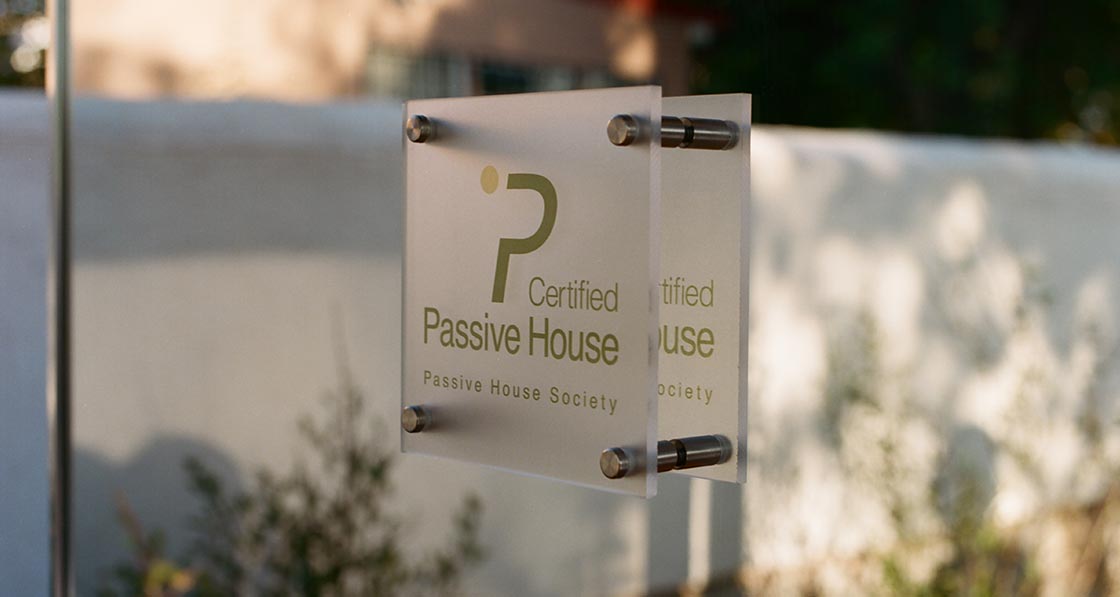
The show has a skin-crawlingly uncomfortable set up: a privileged white couple come into a disadvantaged community, and film a TV show on their efforts to renovate homes profitably but ethically, oblivious to the adverse impact of gentrification on locals, and to the patronising tone of their performative virtue.
The first episode features Whitney interviewing Hans Feist, president of the Passive House Society, a thinly veiled reference to Passive House Institute founder Prof. Wolfgang Feist. “What you end up with is a home that’s kind of like a Thermos,” says the DoppelFeist. “It maintains a consistent and comfortable temperature inside, while the air is kept healthy using heat recovery ventilation.”
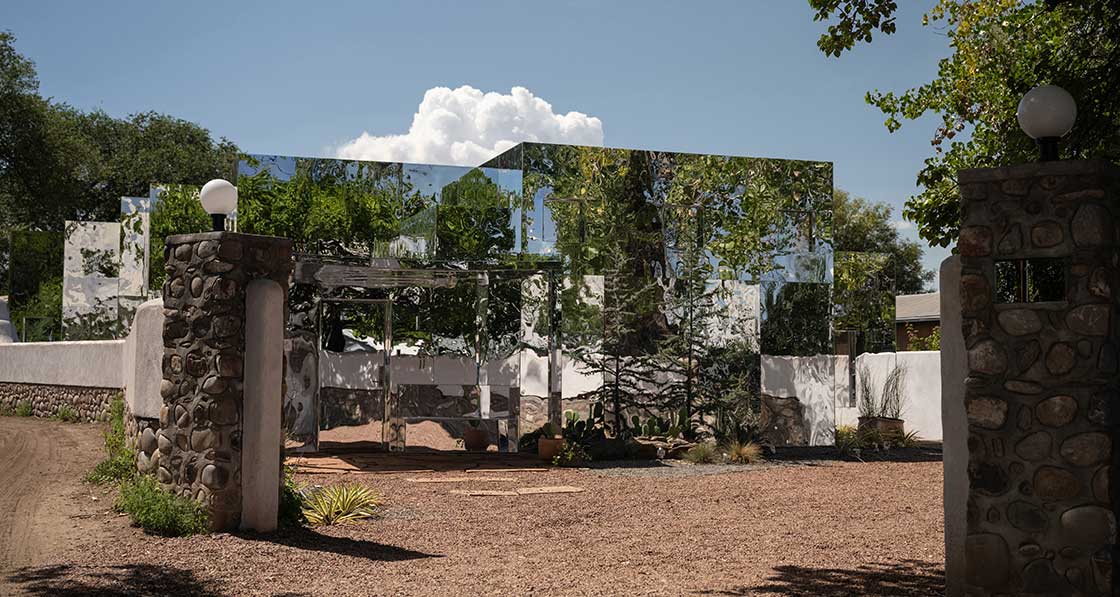
Shortly after, Asher falls victim to the titular curse of the show’s name. While Asher’s crew are filming in the car park outside a discount store, a little girl street vendor, Nala, tries to sell Asher a can of Sprite. With the cameras rolling, Asher reluctantly gives the girl the only cash he has: a $100 bill. When the cameras stop, he takes the money back from her, and promises to come back with change, but the girl refuses and curses him. Asher’s creeping anxiety over the apparent curse hangs over the rest of the series, and the question of whether passive house is somehow involved in the curse even surfaces.
Unfortunately some of the references to passive house in the show don’t ring true, such as the assertion that passive houses take a long time to heat up if a door is left open, that certification is revoked if air conditioning is installed, and the related suggestion that passive houses in hot climates like New Mexico can be uncomfortably hot.
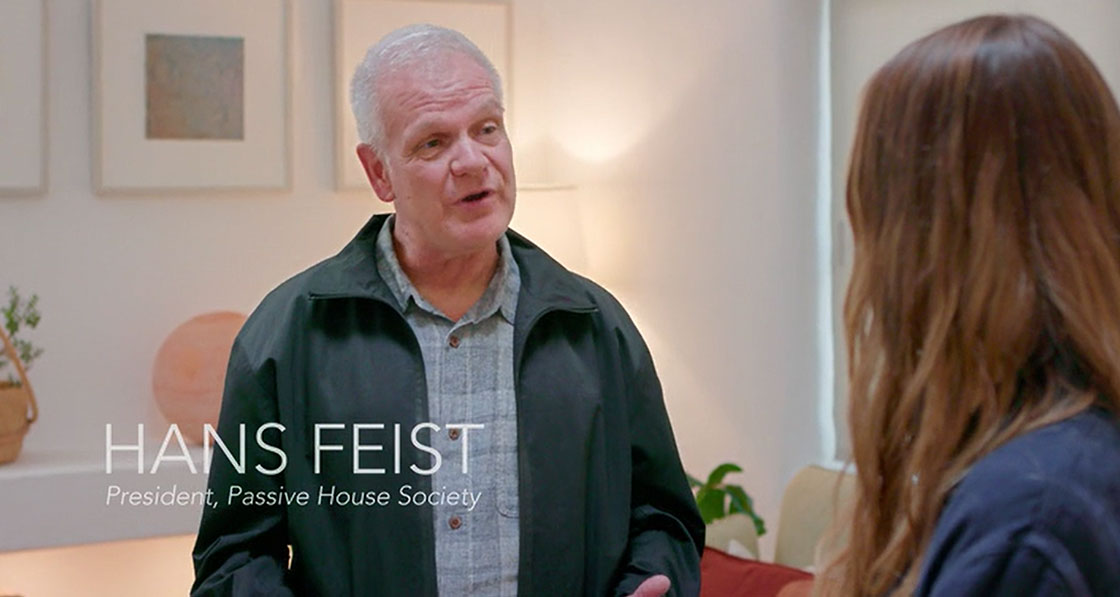
In reality, air conditioning may be a feature of a passive house in Espanola – though the house should require a tiny amount of AC to maintain comfortable temperatures. There is also the implication that passive houses are a premium product for privileged greenies, in spite of a growing number of examples of passive house schemes transforming the lives of low-income households, in some cases for little extra construction cost compared to regular new build or deep renovation.
It’s also worth noting the particular aesthetic choices Whitney made with house design. The homes are mirror-clad, inspired by the work of US artist Doug Aitken, though Whitney puts up a stout defence for this design flourish. “My homes are reflecting the local community, and his reflect nature,” she says – though tell that to the bird that met its maker in one episode after flying into the walls.
But why the passive house standard? Passive House Plus reached out to the show’s production designer Katie Byron to find out more.
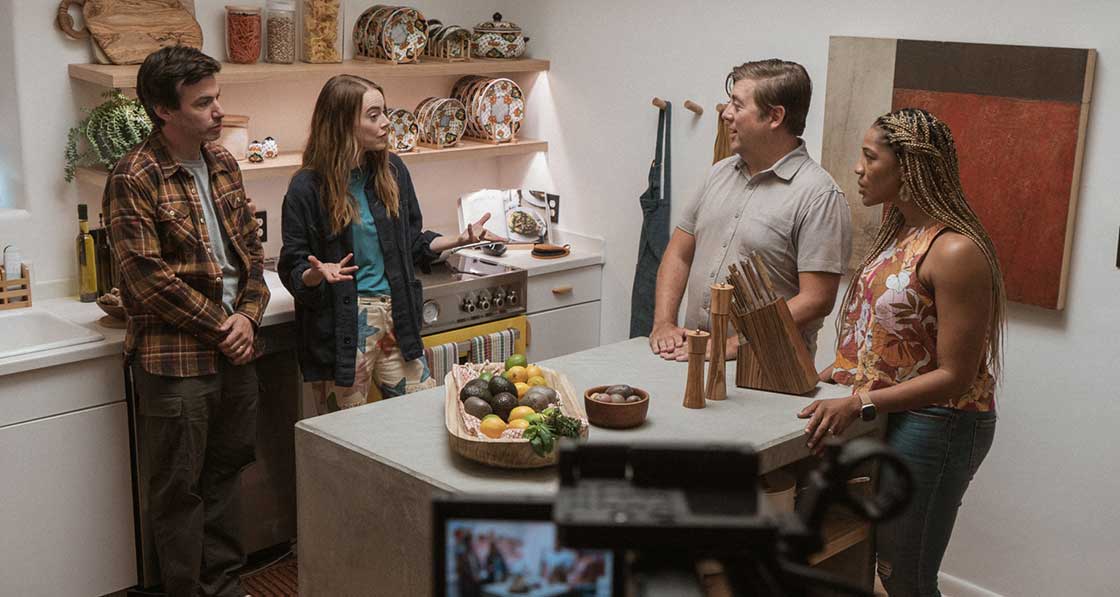
“Nathan Fielder and Benny Safdie wrote passive house renovations into the show before I started,” says Byron. The standard was picked to reflect a kind of aspirational sustainability-focused home and garden TV show Whitney and Asher were trying to get off the ground – albeit passive house through a slightly warped lens.
“Nathan is very careful with wanting to be as authentic as possible with everything in his work, so he really wanted to carefully research and understand the strategy and approach to building a passive home,” says Byron. “We watched every YouTube and documentary we could find on the subject.”
While most of the series was filmed on location in Espanola, no actual renovations took place. “I wish I could say that we did,” says Byron. “We built all of our facades. Parts of the interiors were built on a stage in Albuquerque and parts were shot on location in Espanola.”
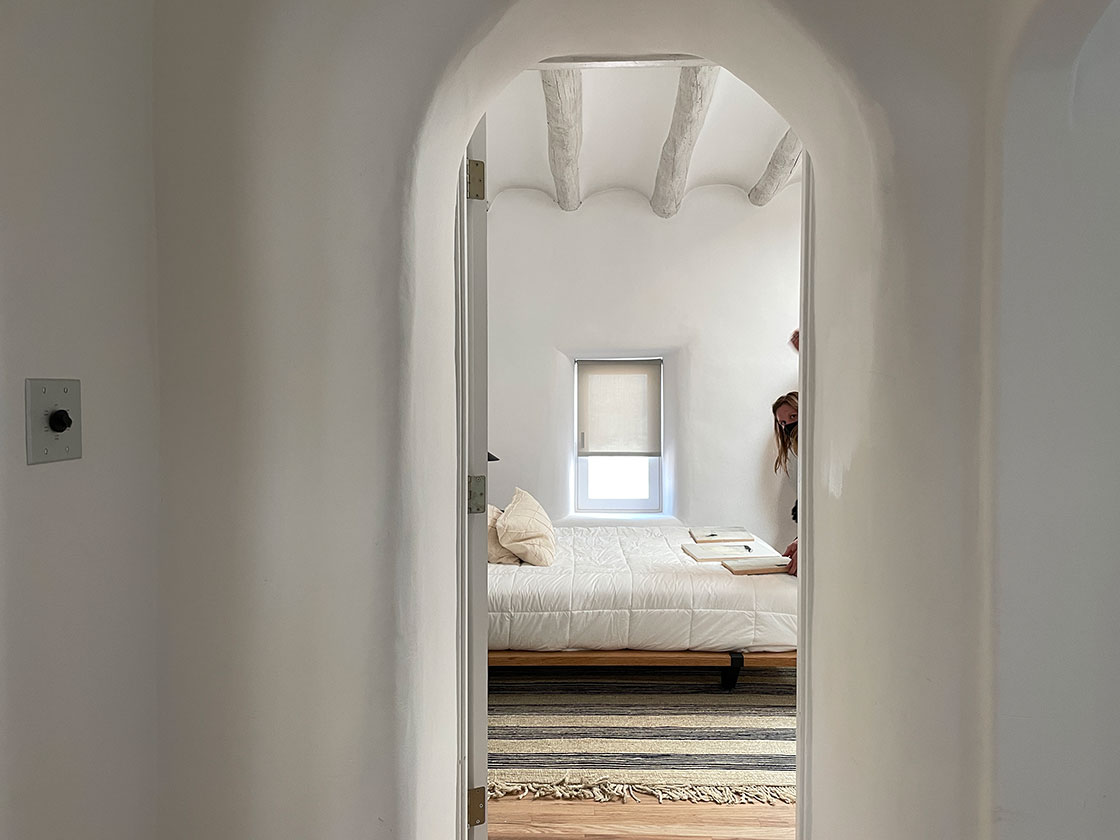
It may be foolish for passive house advocates to get too caught up in picking holes in how passive house is represented in the show – after all, it’s a work of fiction, and it could be argued that the oxygen of publicity for passive house outweighs the risk of the show promoting misconceptions.
A case in point is how the airtightness of the homes is presented, and without giving away any spoilers, its role in the show’s finale. “All of our doors were custom made with triple locking systems and three seals between the door and the frame,” says Byron.
“Nathan really wanted to make sure they felt like there was a suction feeling if you'd operate either. I don't want to give away the ending, but the idea of creating this perfectly sealed environment was an important part of the story.”
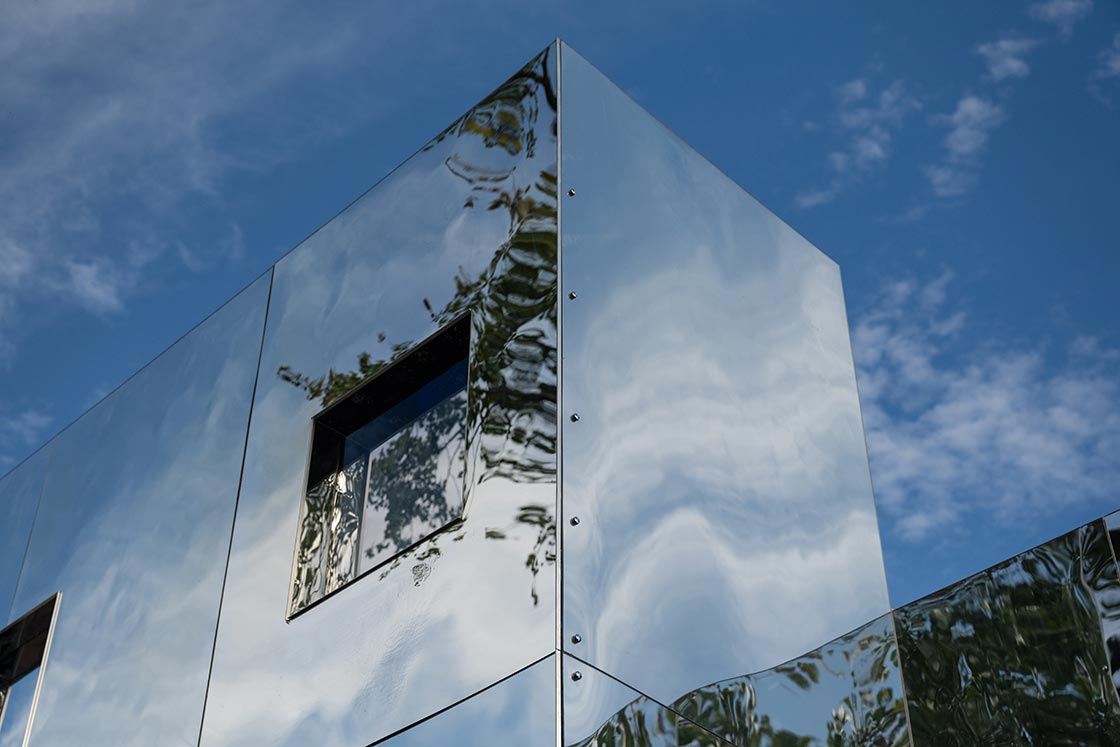
At one point when a window is opened, there’s an audible gush of air – as if a tyre has been punctured. When a prospective buyer complains about the house being too warm, Whitney explains this away. “We did open the front door when we all came in,” she says. “And let in some air,” adds Asher.
“It takes a little while for the temperature to equalise,” says Whitney. The visibly melting buyer asks how long that usually takes. “Five to seven hours, probably,” says Asher. “But once you get that temperature, you want to keep the doors and windows shut, because you got it locked in – it’s a nice 71-72 F [22 C]”. “Don’t open any doors or windows,” the buyer says. “Unless you want it to get hot or cold,” laughs Asher. “Like a Thermos,” says the buyer. “Or a prison”, says his partner.
Sigh. This, frankly, is wildly inaccurate, and it’s probably the point where you should remember that it’s a fictional show rather than a documentary, and that passive house is being used to serve the needs of the story. Brooklyn-based passive house stalwart Ken Levenson, executive director of the Passive House Network offers some perspective.
“I find it helpful to remind myself that this show is about the human condition and not passive house,” he writes, in an excellent review of the show on the PHN website.
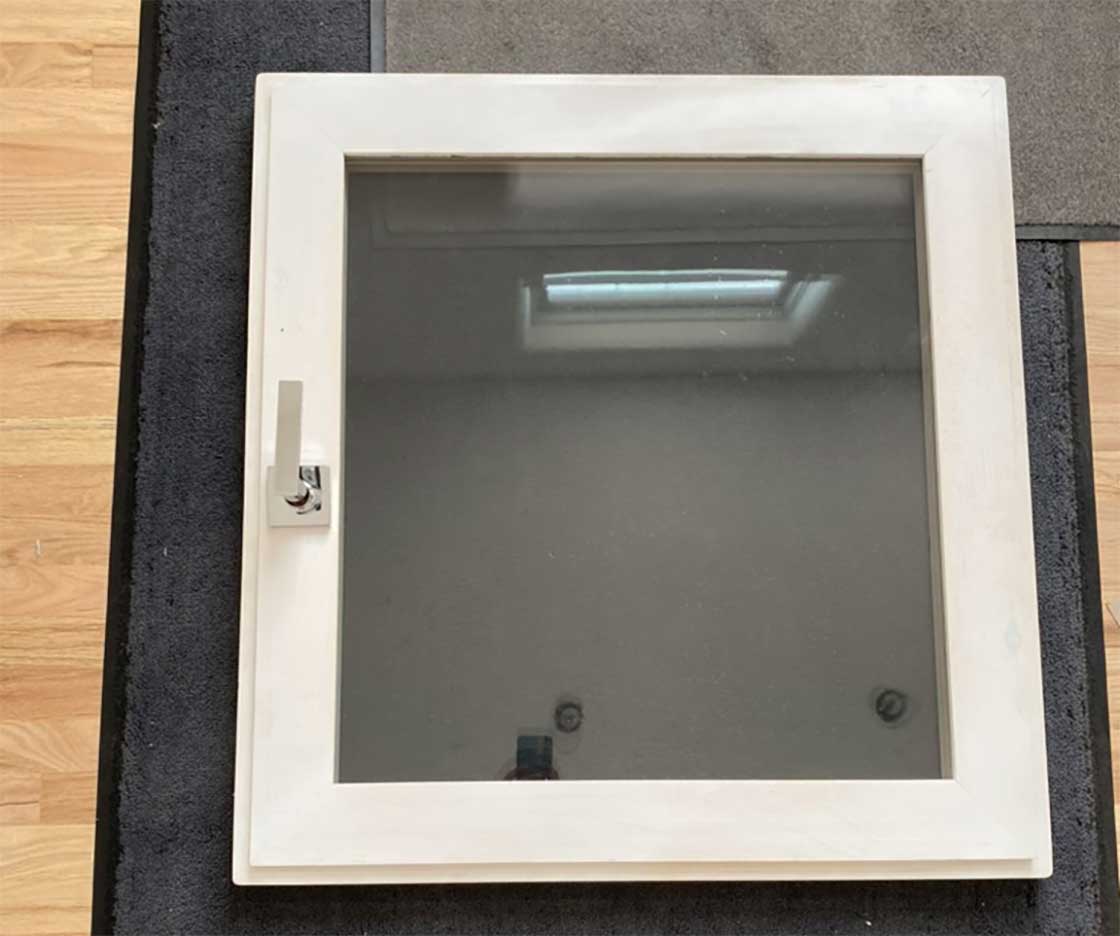
“Clad in mirrors (à la Doug Aitken), passive house is a misunderstood alien, and the show’s producers treat it as such, ultimately unexplained and unexplored, because, after all, they have a story to tell. This isn’t surprising or (very) upsetting. I wouldn’t expect it to be a passive house explainer either, but as they tend to misrepresent passive house to get the desired effect, it’s more gags with the building.”
As to the condition of the particular humans at the centre of the story, the Siegels are a curious mix. “The newlyweds are maniacally insecure, loathsome, self-obsessed, pampered, and lifestyle-eco-consumer-social-art-entrepreneur icky,” says Levenson.
“Their arrogance / insecurity is imposed on others (and us) while trapping them in rabbit holes of good intentions and unintended consequences.”
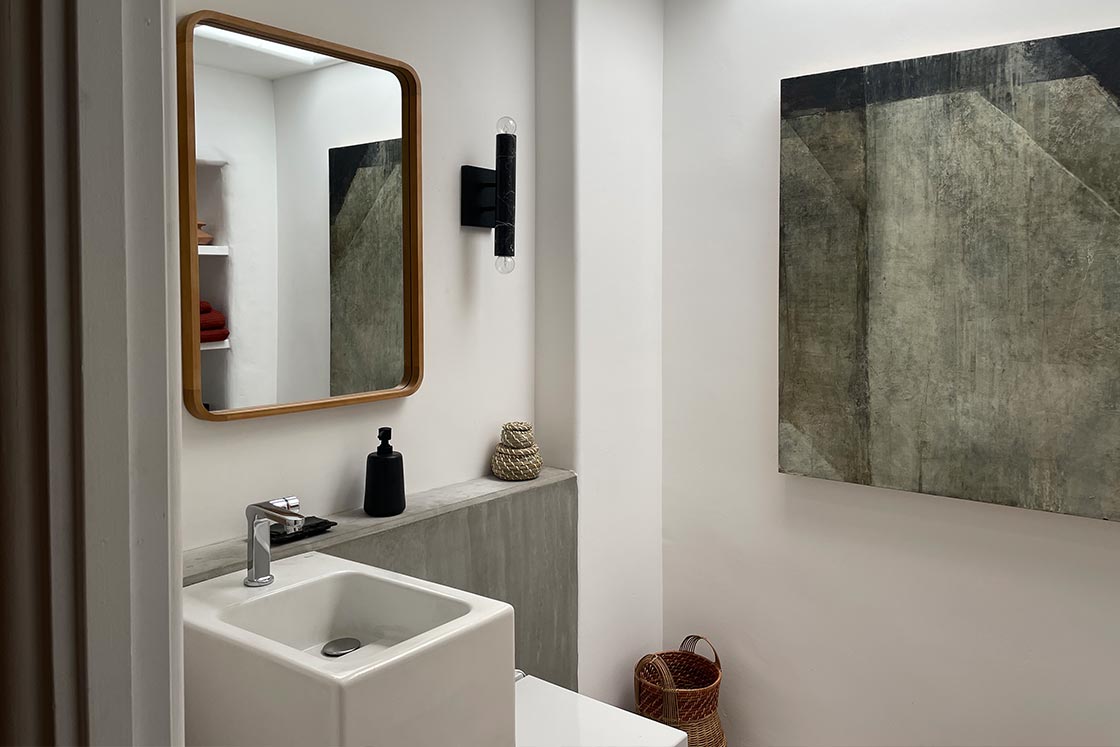
This ickiness is evident in Katie Byron’s production design, which scream of Whitney straining to be right-on and green, but oblivious to her own privilege. To be fair to Whitney, there are more egregious examples.
(For an insight into the unsolicited awfulness a green building magazine publisher encounters: on the day I emailed questions to Byron, a doozy popped into my inbox with the subject line: "Solving the Environmental Stigma of Private Jet Travel: Interview with Hydrogen Powered Jet Pioneer".)
What’s more, the construction industry is still replete with jarringly obvious examples of tokenistic or thoroughly empty attempts at sustainability – such as overly large houses of middling thermal performance specs and high embodied carbon materials, but with a visual green feature like organic paint, a solar array, or recycled / upcycled furniture and finishes. Whitney’s approach seems different.
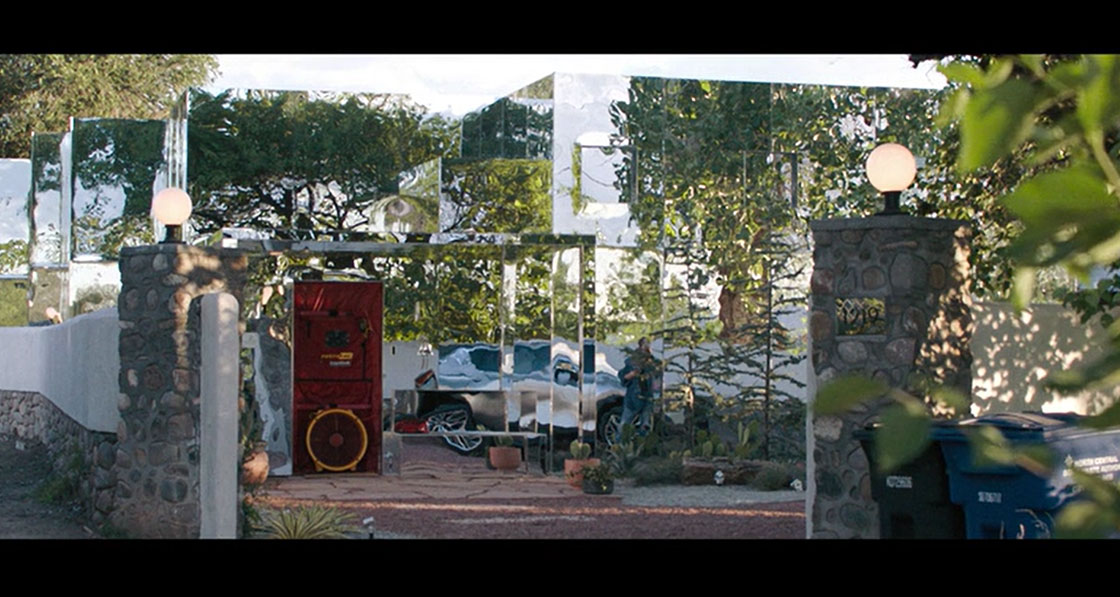
Whether by luck or design, she’s latched on to a science-seem based approach to sustainable building in passive house, and what appear to be modestly sized homes, at least in an American context. “Whitney is complex in her struggle to do the right thing,” says Byron. “I think deep down, she wants validation. Deep down she wants people to think she's a good person. She ultimately wants redemption. So much so, that she'll be willing to take ethical missteps to make people think she's good. The idea of tearing down old and beautiful pueblo adobe homes to build her own version of a passive home obviously has environmental impact. They also have a food delivery subscription with lots of plastic and waste when they could be growing their own food or shopping at the local markets. I think Whitney is a bit confused as to where she draws the line for conservation.”
But if Whitney has a particular blind spot, it’s the inability to recognise how her own privilege pollutes her green efforts. “Her designs also are expensive which feels problematic to her goal to improve environmental issues,” says Byron. “The only people who can afford these homes will be high income earners from out of state. It's not very democratic or inclusive, but because optics are so important to her, she'd rather have a home that had high end finishes on TV than show homes that local people could actually afford. I think she desperately wants to [have] both but doesn't realize that the two are diametrically opposed ideas. It's a struggle that seems quite universal when it comes to climate change.”
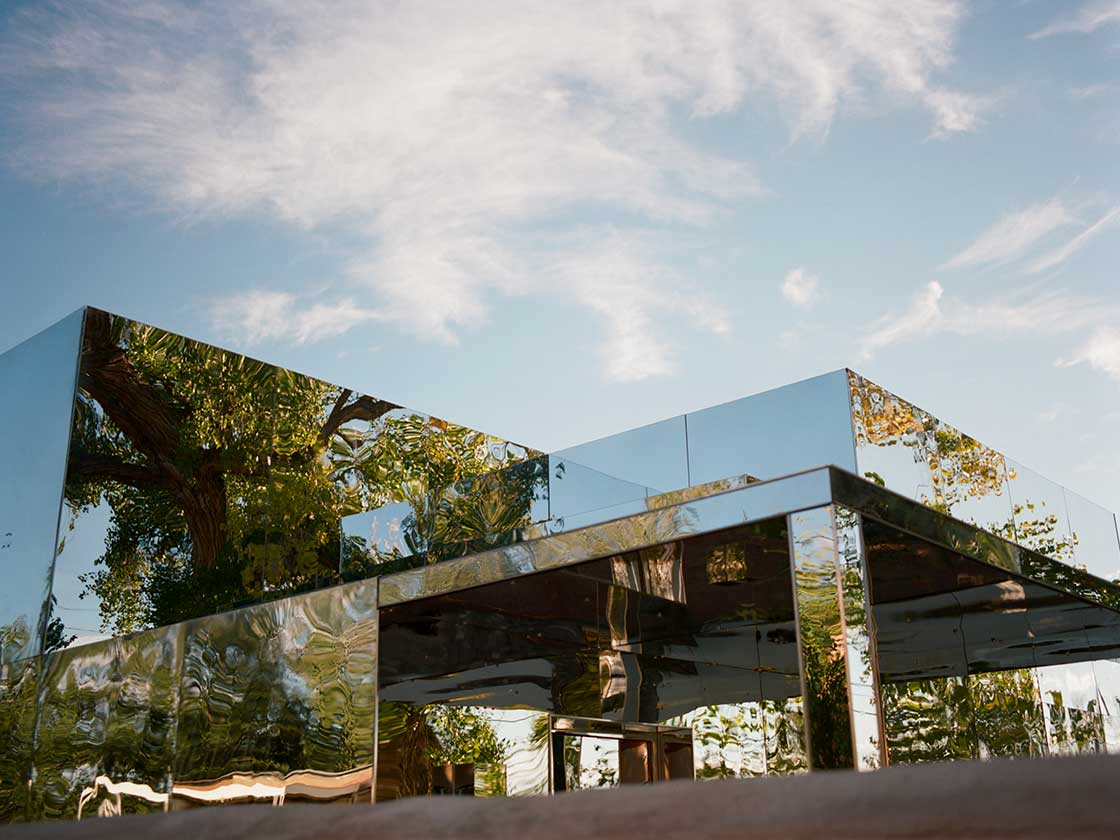
While the Siegels might not be the ambassadors the passive house standard needs, and there are some problematic creative liberties taken in The Curse in terms of how passive houses look and perform, it’s important to recognise the show for what it is: an exceptional and important work. And anoraky concerns aside, Oscar Wilde’s words seem strangely apt: “There is only one thing in life worse than being talked about, and that is not being talked about.”
The piece de resistance for Ken Levenson was footage of Whitney explaining passive house insulation levels in a wall mock-up. “Who could not love this shot?” he says. “At the end of episode one, Whitney says, in a voice-over, ‘I can’t think of a better place to start our passive house revolution.’ Forgive me, but all I can hear is Emma Stone talking about a passive house revolution. Is it me?”
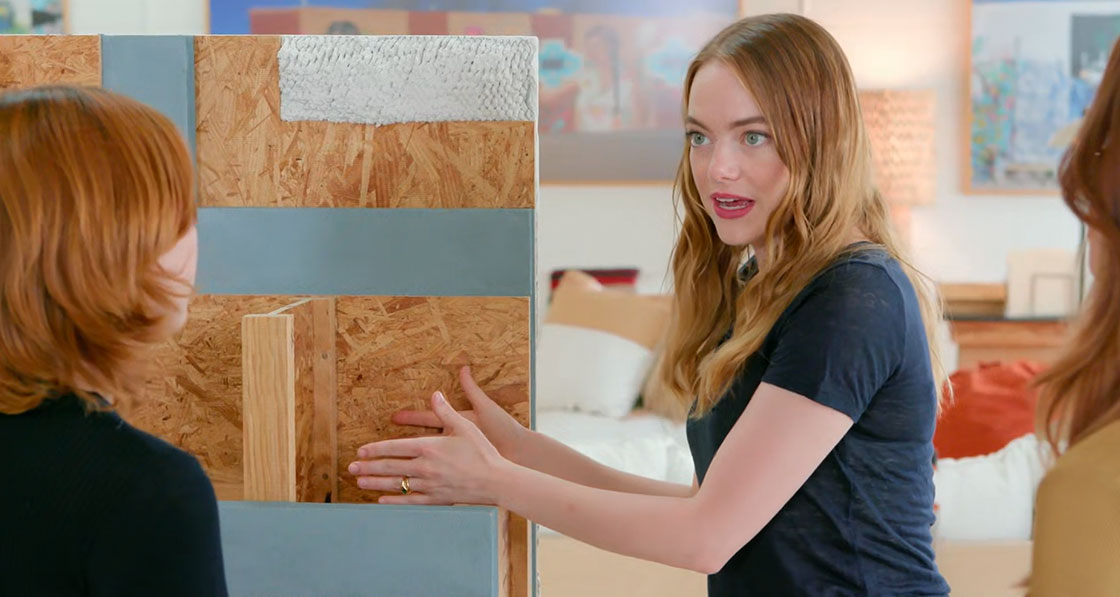
To read Ken Levenson’s marvellous review of The Curse, visit: https://tinyurl.com/CurseReview




